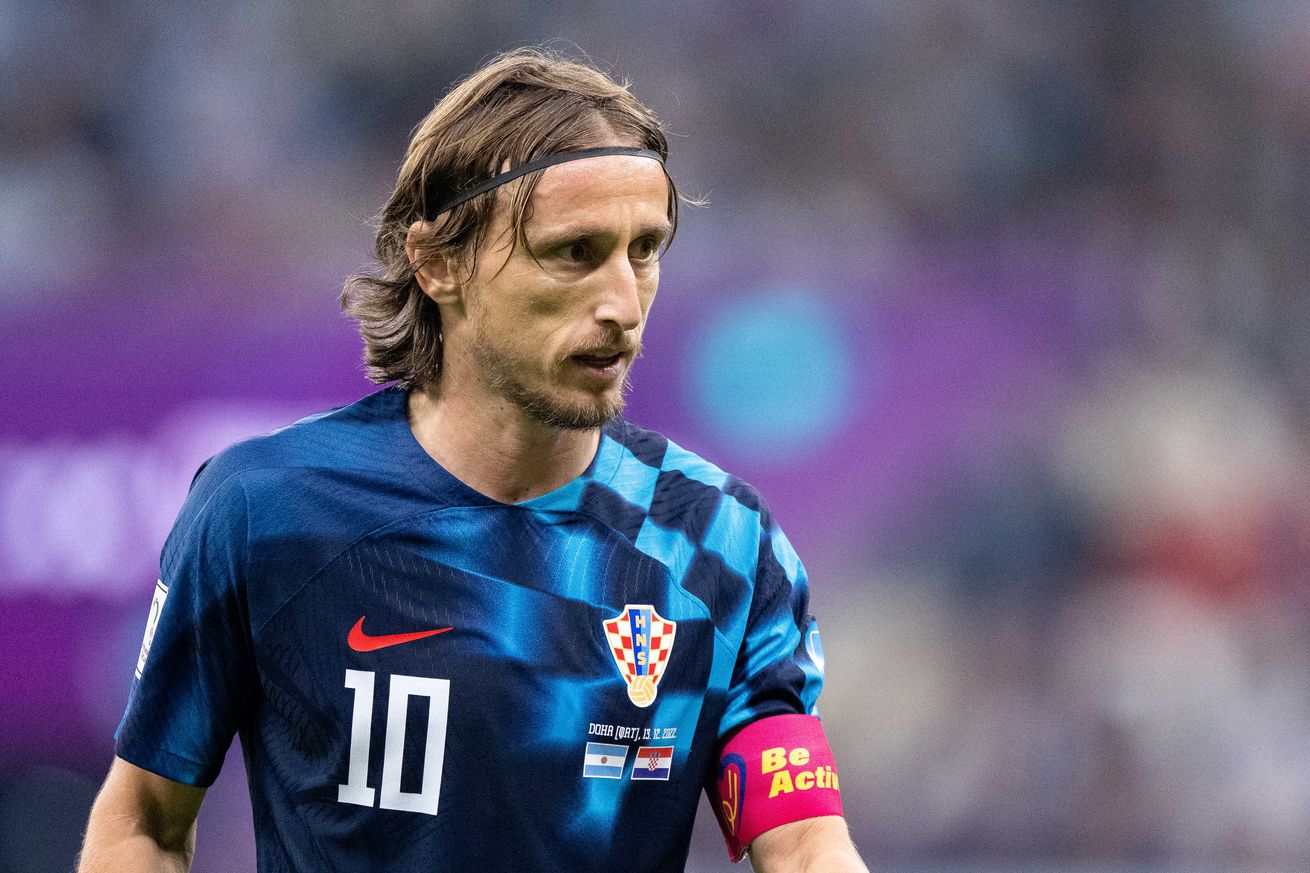Photo by Sebastian Frej/MB Media/Getty Images
One of the best players in the world has likely played his last game at the World Cup.
The “other” No. 10 in the Argentina vs. Croatia World Cup semifinal did not finish the full 90 minutes.
Luka Modric wiped tears from his eyes as he was substituted in the second half of Croatia’s 3-0 loss at the hands of Argentina on Tuesday, an exit that could be the 37-year-old’s last on the World Cup stage (it’s unclear if he’ll play in Saturday’s third-place match). His play in the middle of the park was essential as he led his side to a World Cup final and semifinal in consecutive tournaments, but he’s not the sort of player who will have been satisfied with that.
Modric is a serial winner. His transfer to Real Madrid in 2012 might not have turned as many heads as other Galactico acquisitions, but he immediately stepped in as the crucial midfield piece of a puzzle for what eventually would be the greatest Los Blancos team ever assembled. A decade on from his move and he’s picked up three La Liga winners’ medals, a Copa del Rey medal, and an incredible five UEFA Champions League titles. He also won the coveted Ballon D’or in 2018, becoming the first player other than Messi or Cristiano Ronaldo to win the award since Kaka in 2007.
That individual honor, however, came after a moment of appreciation for the storied midfielder in the wake of Croatia’s run to the 2018 World Cup final, a tournament in which he was also awarded the Golden Ball for best player despite scoring just two goals. Though Modric and his compatriots came up short against France in Moscow, he had completed an individual ascension in the game that was unusual in an era dominated by Messi and Ronaldo.
Modric is special, and as a midfielder sometimes that special impact is overshadowed by goal scorers. But in 2018, at least, it was impossible to ignore his impact for both club and country. His graceful, pace-setting midfield play was the catalyst for his nation’s success, and his arsenal of abilities collected from his days in Zagreb, London, and Madrid made him one of the most well-rounded midfielders ever at just the right time for Croatia to capitalize.
When he first arrived in England he was labeled as too soft for the Premier League, with media and even other managers pointing out his weaknesses in his first season at Tottenham. It wasn’t long though before he settled into a deeper role in midfield than he was used to, showing strength and intelligence on the ball as well as defensive vision, and became one of the best in the game while able to play in a deep or advanced role. By this time in the mid-2010s, his nation had recovered somewhat and were once again competing at the level of his breakthrough team at the 2006 World Cup. They qualified for the competition again in 2014, but were knocked out at the group stage after defeats to Brazil and Mexico.
The expectation weighed on them, with a generation of players who grew up under the pressure of Croatia’s historic third-place finish at the 1998 World Cup in their first year of qualifying. Ivan Rakitic, Marcelo Brozovic, and Ivan Perisic among others made 2018 possible, and of course this most recent run, but even in his later years, Modric remains the beating heart of a team that despite its shortcomings remains so tough to beat.
You can’t tell the story of Luka Modric without the World Cup, and vice-versa. He is impossible to overlook now, and perhaps also a living lesson to the value of the position as well as player growth over time. It’s another chapter of the right stage at the right time for the right player, and though the ultimate prize eluded him, the competition helped show the world his true quality as one of the best midfielders the game has seen.













